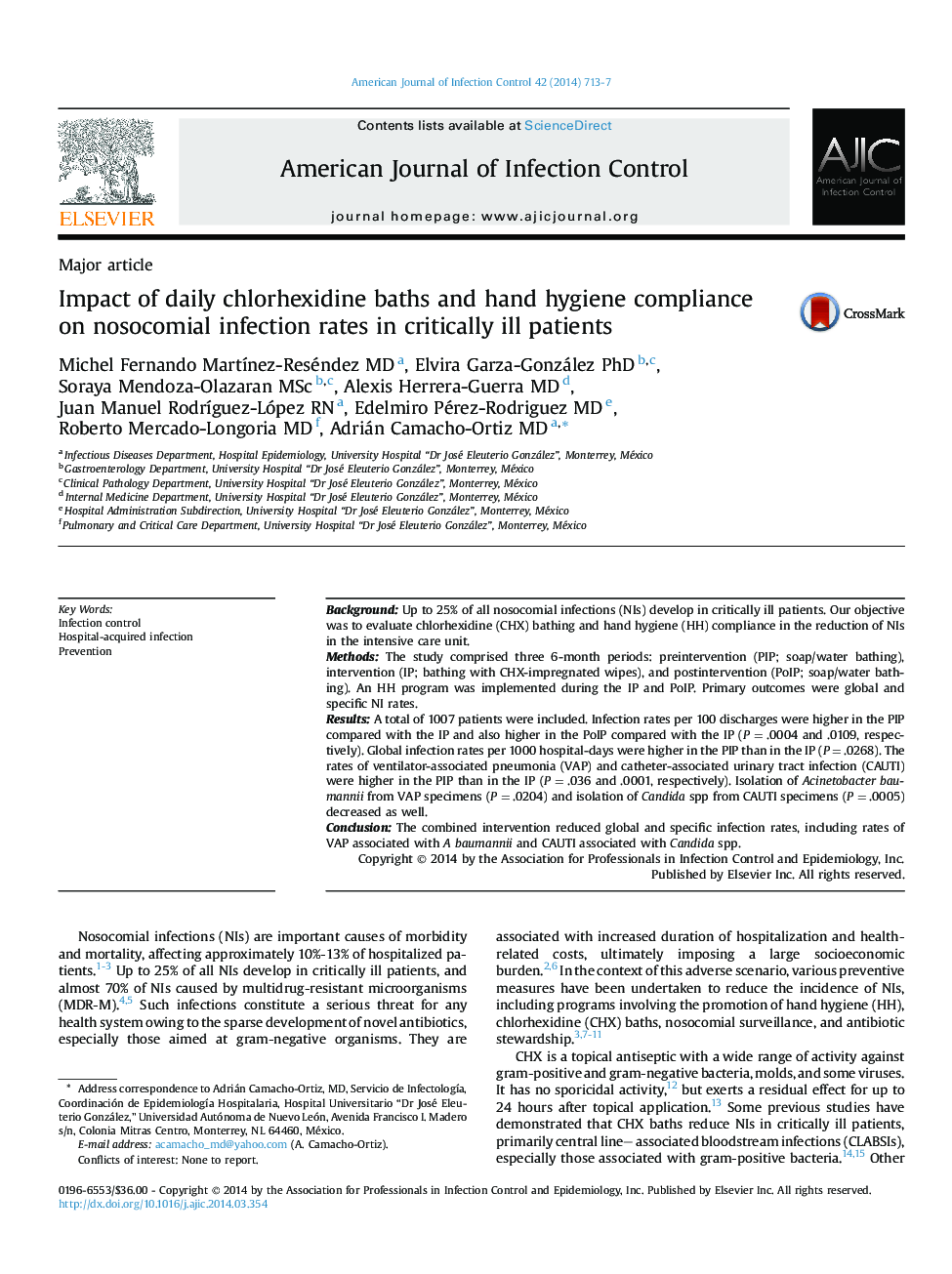| کد مقاله | کد نشریه | سال انتشار | مقاله انگلیسی | نسخه تمام متن |
|---|---|---|---|---|
| 2636960 | 1563484 | 2014 | 5 صفحه PDF | دانلود رایگان |
BackgroundUp to 25% of all nosocomial infections (NIs) develop in critically ill patients. Our objective was to evaluate chlorhexidine (CHX) bathing and hand hygiene (HH) compliance in the reduction of NIs in the intensive care unit.MethodsThe study comprised three 6-month periods: preintervention (PIP; soap/water bathing), intervention (IP; bathing with CHX-impregnated wipes), and postintervention (PoIP; soap/water bathing). An HH program was implemented during the IP and PoIP. Primary outcomes were global and specific NI rates.ResultsA total of 1007 patients were included. Infection rates per 100 discharges were higher in the PIP compared with the IP and also higher in the PoIP compared with the IP (P = .0004 and .0109, respectively). Global infection rates per 1000 hospital-days were higher in the PIP than in the IP (P = .0268). The rates of ventilator-associated pneumonia (VAP) and catheter-associated urinary tract infection (CAUTI) were higher in the PIP than in the IP (P = .036 and .0001, respectively). Isolation of Acinetobacter baumannii from VAP specimens (P = .0204) and isolation of Candida spp from CAUTI specimens (P = .0005) decreased as well.ConclusionThe combined intervention reduced global and specific infection rates, including rates of VAP associated with A baumannii and CAUTI associated with Candida spp.
Journal: American Journal of Infection Control - Volume 42, Issue 7, July 2014, Pages 713–717
